Abstract
Welding may be detrimental to the male reproductive system. To test this hypothesis, semen quality was examined in 35 stainless steel welders, 46 mild steel welders, and 54 non-welding metal workers and electricians. These figures represent a participation rate of 37.1% in welders and 36.7% in non-welding subjects. The mean exposure to welding fume particulates was 1.3 mg/m3 (SD 0.8) in stainless steel welders using tungsten inert gas, 3.2 mg/m3 (SD 1.0) in low exposed mild steel welders using manual metal arc or metal active gas (n = 31), and 4.7 mg/m3 (SD 2.1) in high exposed mild steel welders (n = 15). The semen quality of each participant was defined in terms of the mean values of the particular semen parameters in three semen samples delivered at monthly intervals in a period with occupational exposure in a steady state. The sperm concentration was not reduced in either mild steel or stainless steel welders. The sperm count per ejaculate, the proportion of normal sperm forms, the degree of sperm motility, and the linear penetration rate of the sperm were significantly decreased and the sperm concentration of follicle stimulating hormone (FSH) was non-significantly increased in mild steel welders. A dose response relation between exposure to welding fumes and these semen parameters (sperm count excepted) was found. Semen quality decreased and FSH concentrations increased with increasing exposure. Significant deteriorations in some semen parameters were also observed in stainless steel welders. An analysis of information from questionnaires obtained from the whole population including subjects who declined to participate indicated an underestimation of effects due to selection bias. Potential confounding was treated by restriction and statistical analysis. The results support the hypothesis that mild steel welding and to a lesser extent stainless steel welding with tungsten inert gas is associated with reduced semen quality at exposure in the range of the Danish process specific threshold limit values of welding.
Full text
PDF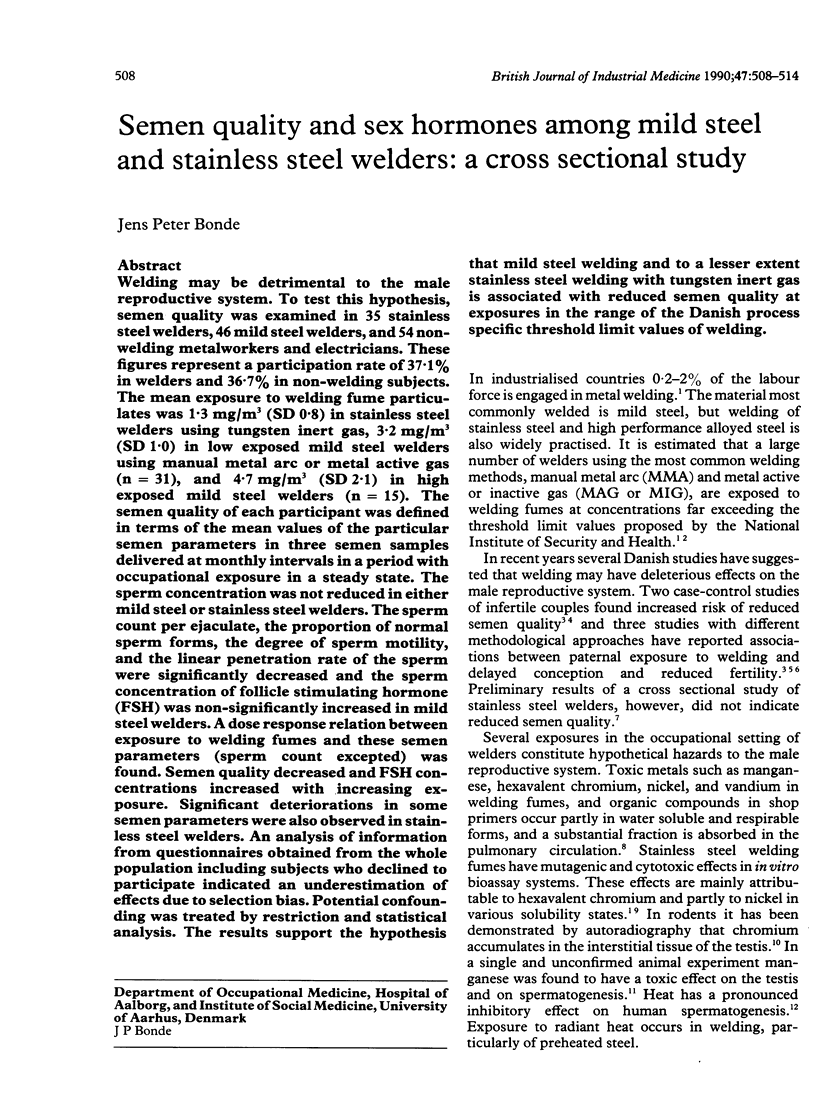
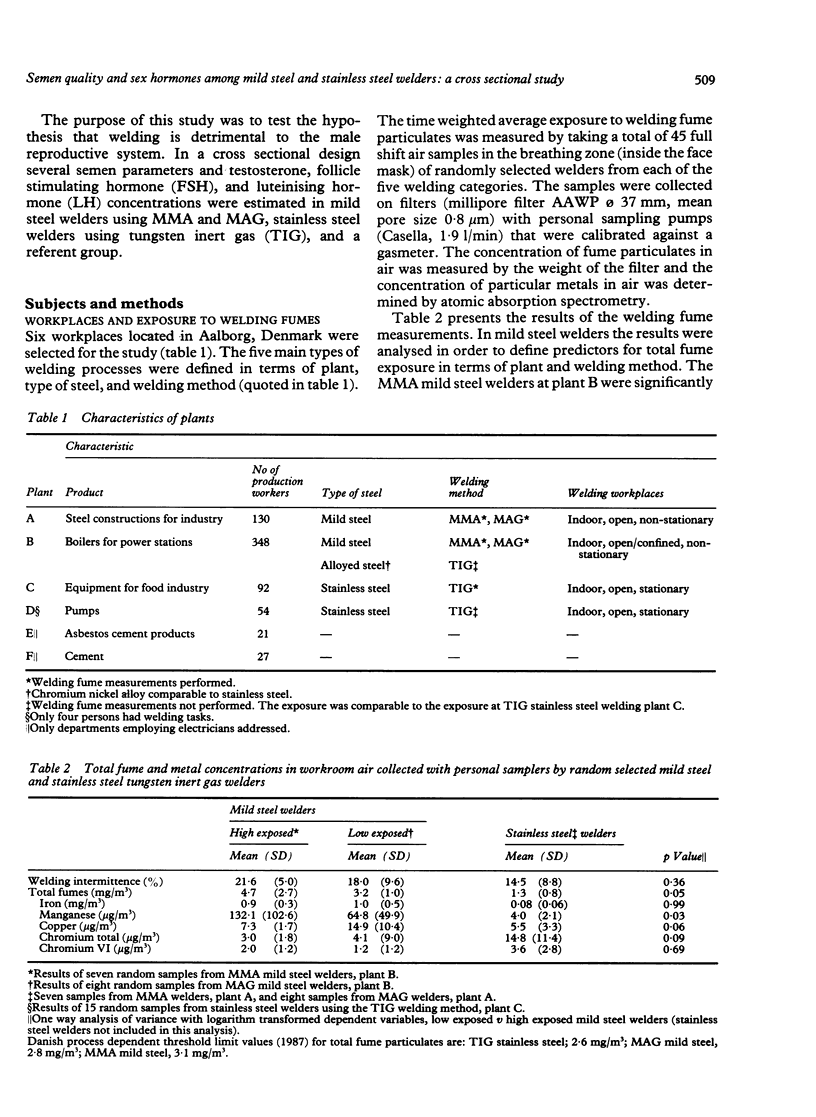
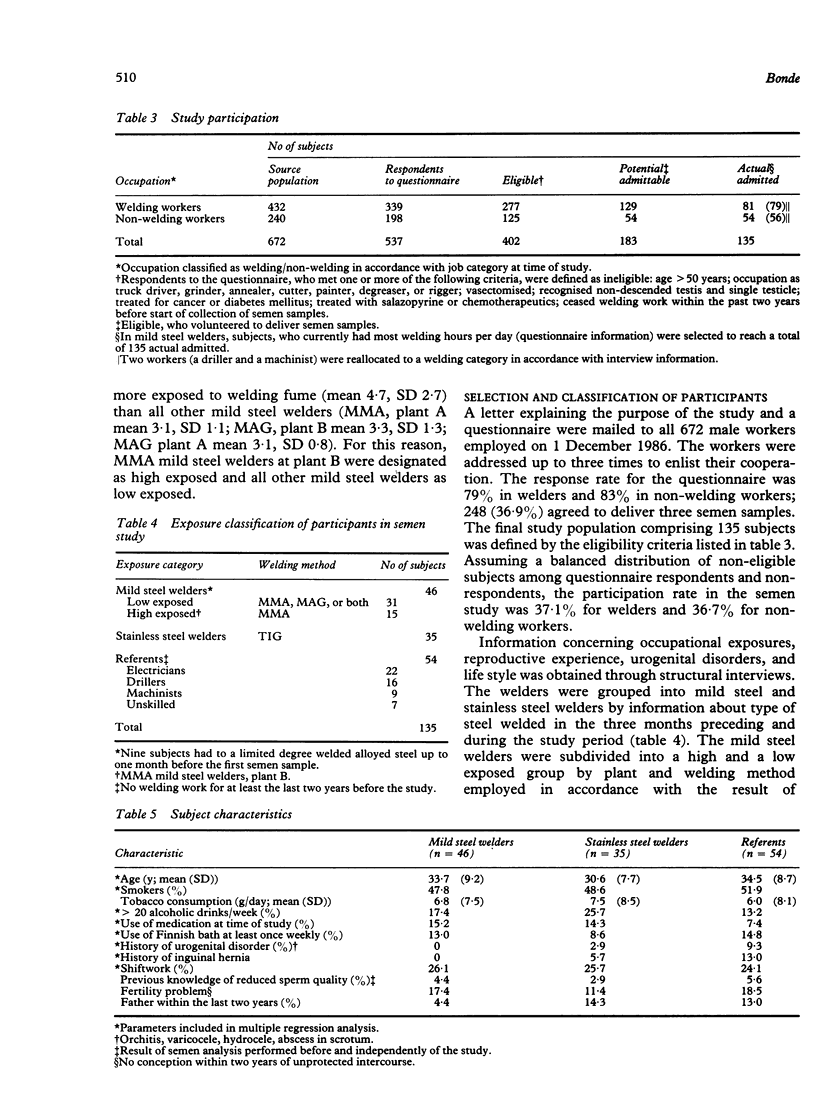
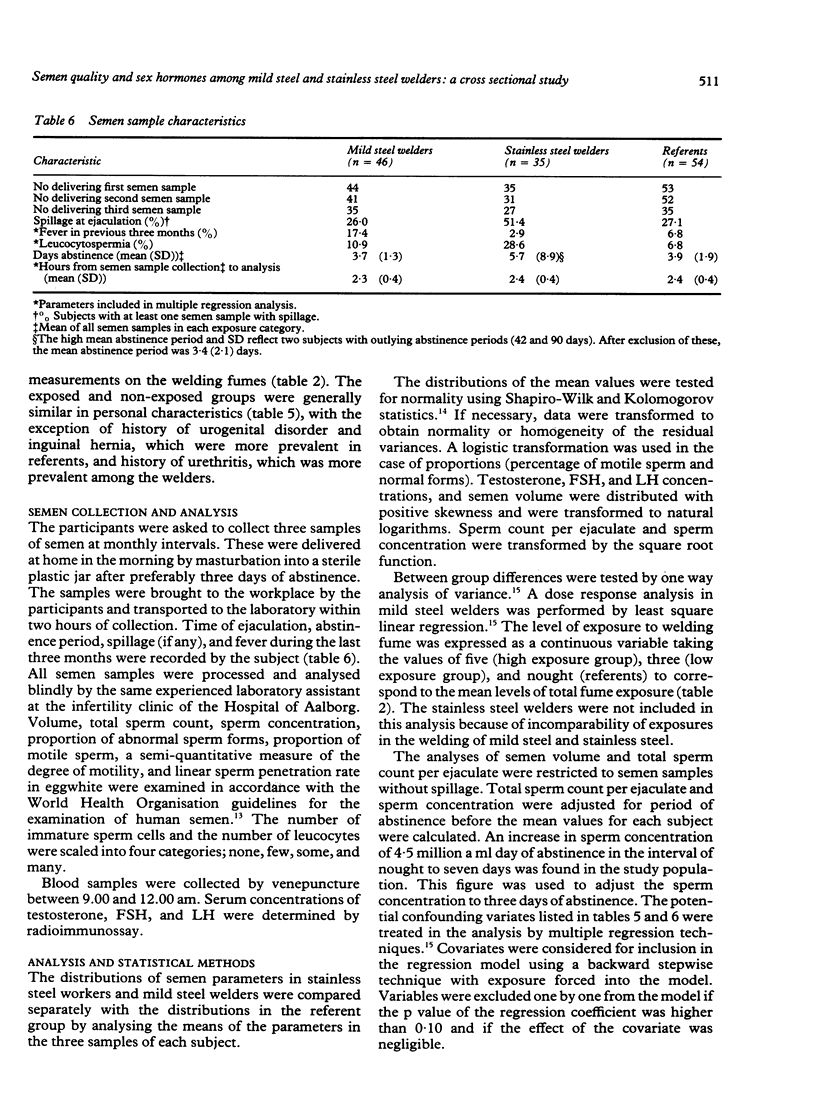
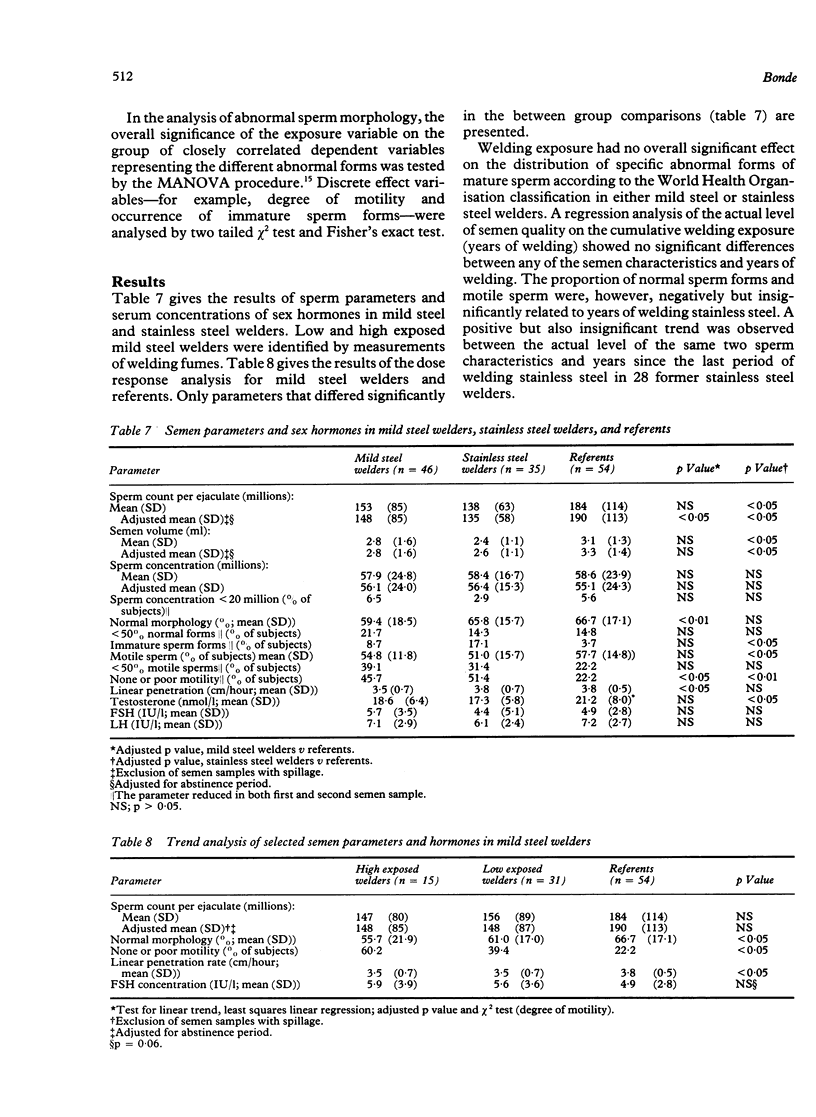
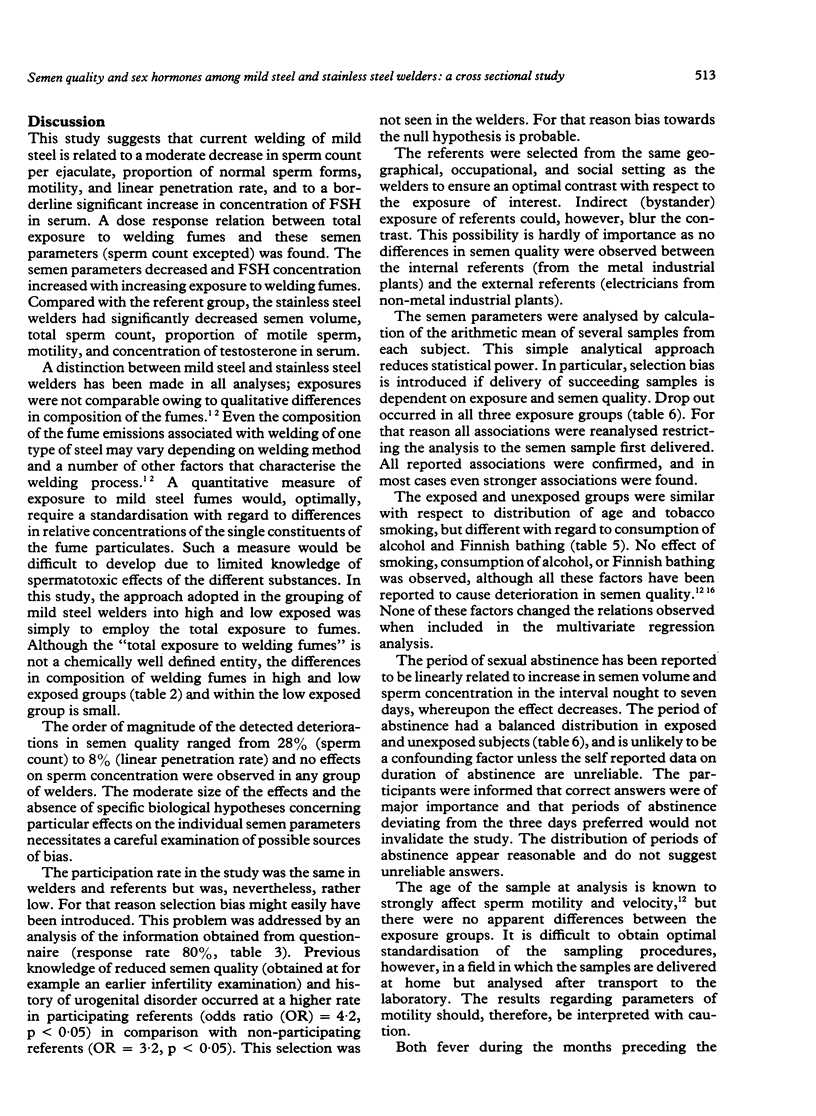
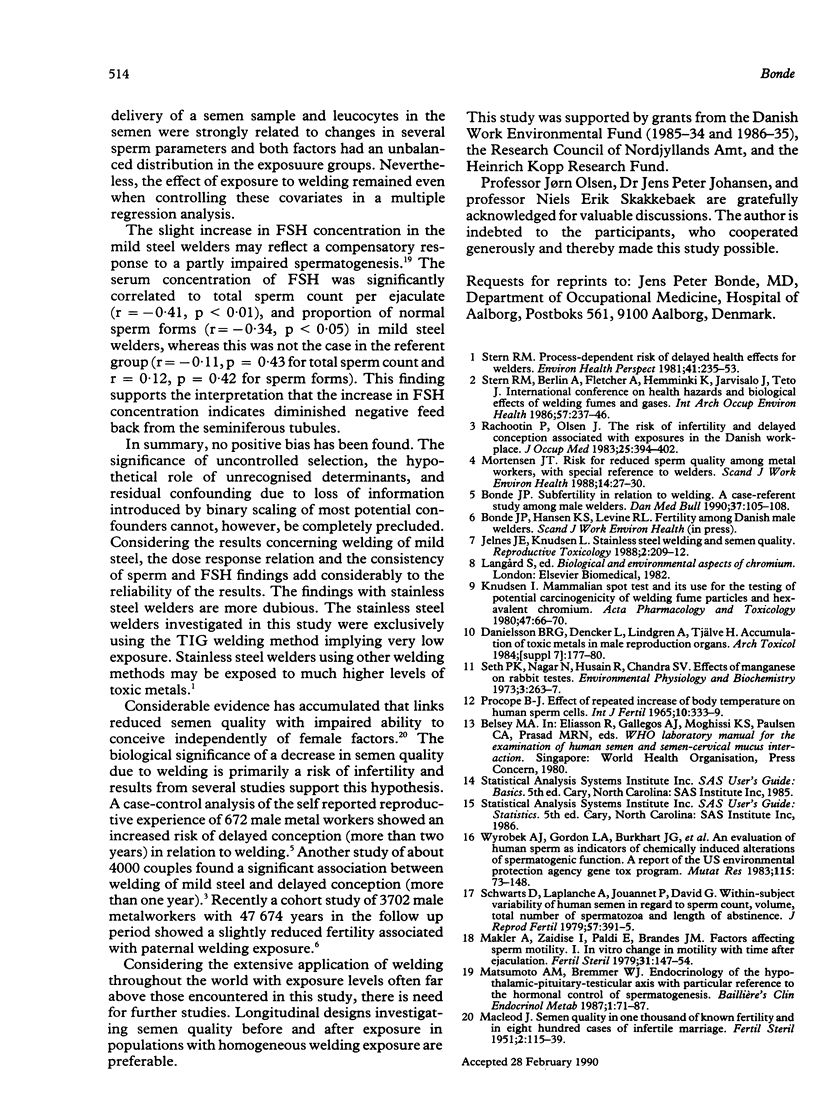
Selected References
These references are in PubMed. This may not be the complete list of references from this article.
- Bonde J. P. Subfertility in relation to welding. A case referent study among male welders. Dan Med Bull. 1990 Feb;37(1):105–108. [PubMed] [Google Scholar]
- Danielsson B. R., Dencker L., Lindgren A., Tjälve H. Accumulation of toxic metals in male reproduction organs. Arch Toxicol Suppl. 1984;7:177–180. doi: 10.1007/978-3-642-69132-4_26. [DOI] [PubMed] [Google Scholar]
- EVALUATION of the barren marriage; minimal procedures; the Research Correlating Committee of the American Society for the Study of Sterility. Fertil Steril. 1951 Jan;2(1):1–14. [PubMed] [Google Scholar]
- Jelnes J. E. Semen quality in workers producing reinforced plastic. Reprod Toxicol. 1988;2(3-4):209–212. doi: 10.1016/0890-6238(88)90024-x. [DOI] [PubMed] [Google Scholar]
- Knudsen I. The mammalian spot test and its use for the testing of potential carcinogenicity of welding fume particles and hexavalent chromium. Acta Pharmacol Toxicol (Copenh) 1980 Jul;47(1):66–70. doi: 10.1111/j.1600-0773.1980.tb02027.x. [DOI] [PubMed] [Google Scholar]
- Makler A., Zaidise I., Paldi E., Brandes J. M. Factors affecting sperm motility. I. In vitro change in motility with time after ejaculation. Fertil Steril. 1979 Feb;31(2):147–154. doi: 10.1016/s0015-0282(16)43815-x. [DOI] [PubMed] [Google Scholar]
- Matsumoto A. M., Bremner W. J. Endocrinology of the hypothalamic-pituitary-testicular axis with particular reference to the hormonal control of spermatogenesis. Baillieres Clin Endocrinol Metab. 1987 Feb;1(1):71–87. doi: 10.1016/s0950-351x(87)80053-8. [DOI] [PubMed] [Google Scholar]
- Mortensen J. T. Risk for reduced sperm quality among metal workers, with special reference to welders. Scand J Work Environ Health. 1988 Feb;14(1):27–30. doi: 10.5271/sjweh.1954. [DOI] [PubMed] [Google Scholar]
- Procopé B. J. Effect of repeated increase of body temperature on human sperm cells. Int J Fertil. 1965 Oct-Dec;10(4):333–339. [PubMed] [Google Scholar]
- Rachootin P., Olsen J. The risk of infertility and delayed conception associated with exposures in the Danish workplace. J Occup Med. 1983 May;25(5):394–402. [PubMed] [Google Scholar]
- Schwartz D., Laplanche A., Jouannet P., David G. Within-subject variability of human semen in regard to sperm count, volume, total number of spermatozoa and length of abstinence. J Reprod Fertil. 1979 Nov;57(2):391–395. doi: 10.1530/jrf.0.0570391. [DOI] [PubMed] [Google Scholar]
- Stern R. M. Process-dependent risk of delayed health effects for welders. Environ Health Perspect. 1981 Oct;41:235–253. doi: 10.1289/ehp.8141235. [DOI] [PMC free article] [PubMed] [Google Scholar]
- Wyrobek A. J., Gordon L. A., Burkhart J. G., Francis M. W., Kapp R. W., Jr, Letz G., Malling H. V., Topham J. C., Whorton M. D. An evaluation of human sperm as indicators of chemically induced alterations of spermatogenic function. A report of the U.S. Environmental Protection Agency Gene-Tox Program. Mutat Res. 1983 May;115(1):73–148. doi: 10.1016/0165-1110(83)90015-5. [DOI] [PubMed] [Google Scholar]


